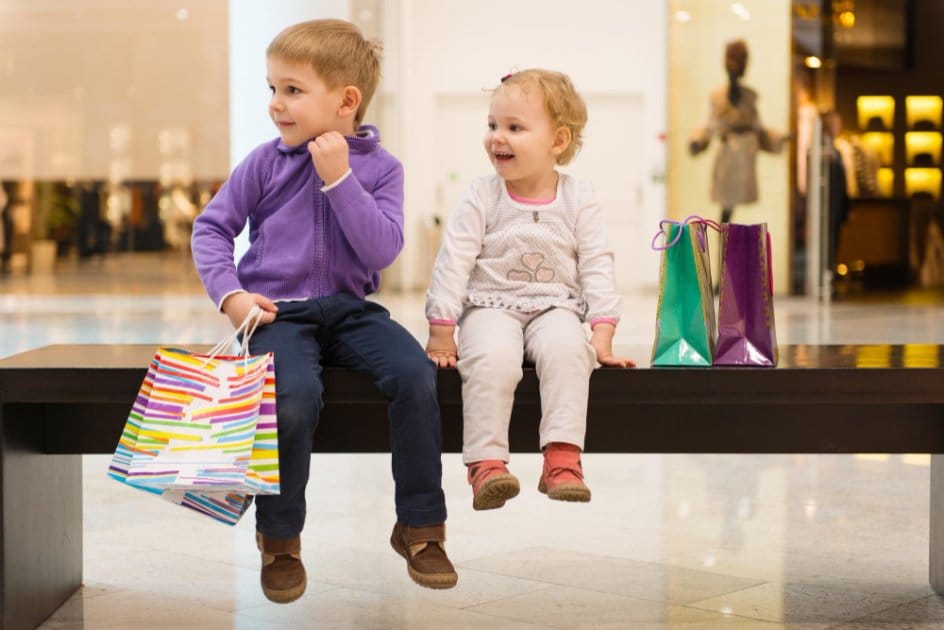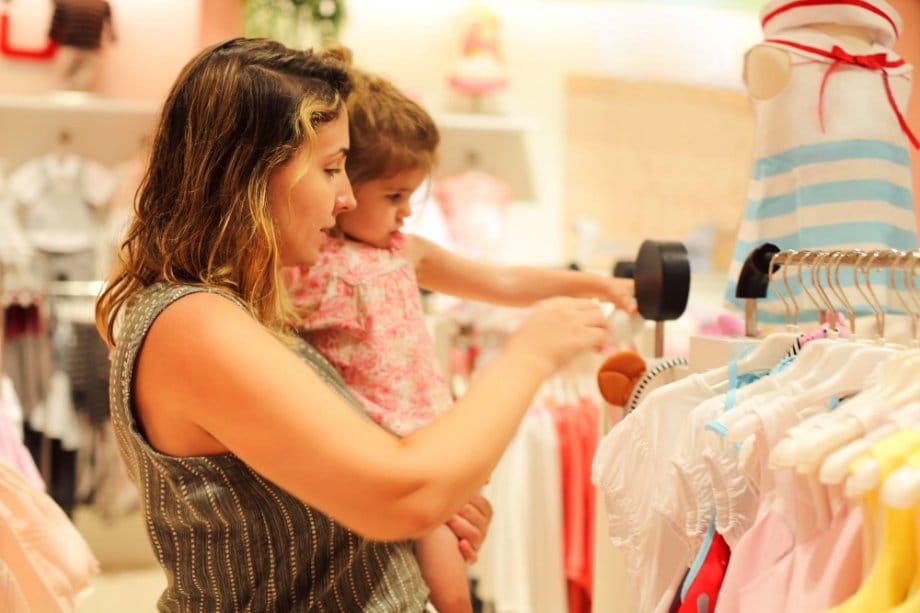Your Complete Guide to Understanding Toddler Sizing Differences and Shopping Strategies
Quick Answer
Toddler boy and girl clothes use the same size labels (2T, 3T, 4T), but they fit very differently. Boys' clothes are typically cut looser and boxier, while girls' clothes tend to be more fitted and narrower, even though the size charts show identical measurements for both genders.
- Same size labels, different actual fits
- Boys' clothes: looser, boxier cuts with more room for movement
- Girls' clothes: slimmer, more fitted designs even at toddler ages
- Always check measurements, not just age labels
Table of Contents
- Understanding Toddler Clothing Size Basics
- Are Boys and Girls Toddler Sizes Different?
- Interactive Size Calculator
- Key Differences Between Boy and Girl Clothes
- Decoding Size Labels: 2T vs 24M vs Regular Sizes
- Brand Comparison and Variations
- How to Measure Your Toddler Correctly
- Smart Shopping Strategies
- Common Sizing Problems and Solutions
- Growth Spurts and Development Factors
- Frequently Asked Questions
- Conclusion
Understanding Toddler Clothing Size Basics
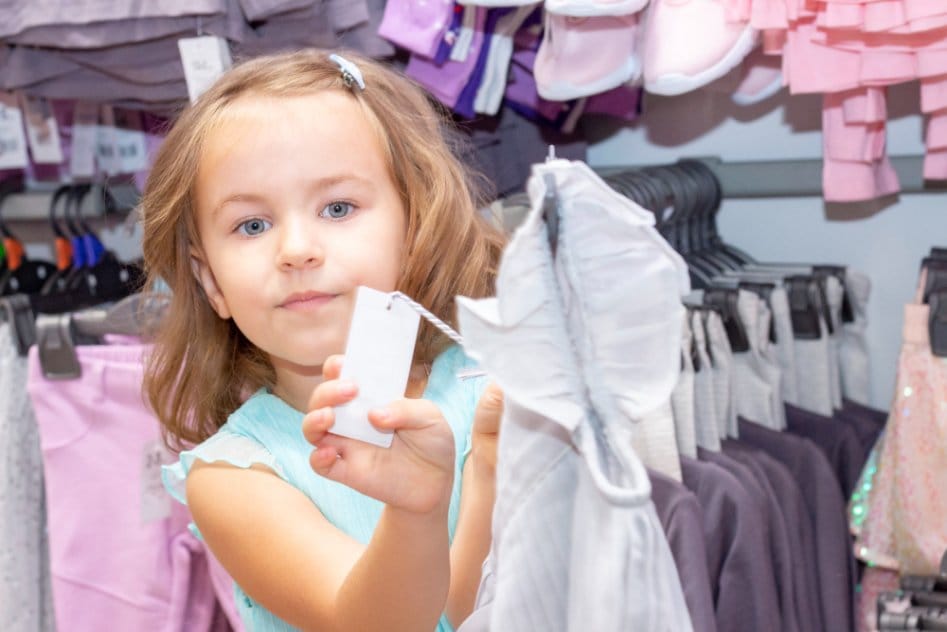
When shopping for toddler clothes, parents quickly discover that sizing isn't as straightforward as it seems. While size labels appear universal, the actual fit can vary dramatically between boys' and girls' clothing, even within the same brand.
How Toddler Sizing Works
Toddler sizes typically range from 12M (12 months) to 5T, with the "T" standing for "toddler." These sizes are specifically designed for children who may still be wearing diapers and have the proportional body shape typical of toddlers.
| Size | Typical Age | Height (inches) | Weight (pounds) | Special Features |
|---|---|---|---|---|
| 12M-18M | 1-1.5 years | 28-32 | 20-26 | Snap closures, diaper room |
| 2T | 1.5-2 years | 33-35 | 26-28 | Extra diaper room, shorter sleeves |
| 3T | 2-3 years | 35-38 | 28-32 | Fits diapers or training pants |
| 4T | 3-4 years | 38-41 | 32-36 | Less room for diapers |
| 5T | 4-5 years | 41-44 | 36-42 | Transition to kid sizes |
Are Boys and Girls Toddler Sizes Different?
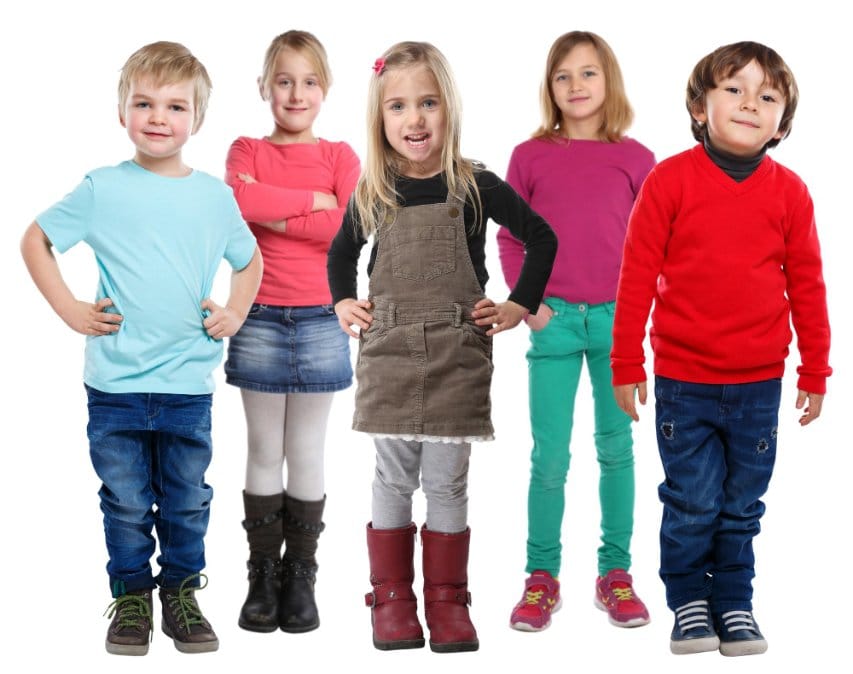
The short answer is yes and no. While the size charts show identical measurements for boys and girls in toddler ranges, the actual garment construction differs significantly.
Official Size Standards vs Reality
Research shows that toddler size charts for boys and girls list the same height and weight ranges. A 3T should theoretically fit any toddler within the specified measurements, regardless of gender. However, clothing manufacturers cut boys' and girls' garments differently, even at these young ages.
Boys' Toddler Clothing
- Boxier, looser fit through torso
- Wider leg openings in pants
- Longer shirt lengths
- More room in shoulder area
- Roomier armholes
- Straight-cut designs
Girls' Toddler Clothing
- More fitted, tapered cuts
- Narrower through waist and hips
- Shorter shirt lengths
- Shaped armholes
- Tighter sleeve fit
- Curved seams and princess lines
Are Boy and Girl Babies the Same Size?
Interestingly, newborns and young babies (0-18 months) show minimal physical differences between boys and girls. According to the CDC Growth Charts, the variation within each gender is much greater than the average differences between genders at this age.
However, clothing manufacturers begin differentiating designs as early as 6 months, anticipating future body development rather than reflecting current physical differences.
Interactive Size Calculator
Find Your Toddler's Perfect Size
Enter your child's measurements below for personalized size recommendations:
Your Recommended Size:
Key Differences Between Boy and Girl Toddler Clothes
Cut and Fit Variations
The most significant differences lie in how garments are cut and constructed, not the size labels themselves.
Shirt and Top Differences
- Boys' tops: Rectangular cut with straight seams, longer length, wider necklines
- Girls' tops: Shaped with curved seams, shorter length, fitted through waist
Pants and Bottom Differences
- Boys' pants: Straight leg, roomier seat and thigh area, longer inseam
- Girls' pants: Tapered leg, fitted through hips, may have stretch panels
Design and Style Elements
Beyond fit, boys' and girls' toddler clothes differ in decorative elements and functional features:
Boys' Style Elements
- Plain or minimal decorative details
- Utilitarian button and zipper placement
- Reinforced knees on pants
- Pocket placement for functionality
- Heavier, more durable fabrics
Girls' Style Elements
- Ruffles, bows, and decorative trim
- Curved hemlines and shaped details
- Decorative rather than functional pockets
- Lighter weight fabrics
- More color and pattern variety
Pro Shopping Tip
If you want a looser fit for your toddler girl, consider shopping in the boys' section for basics like t-shirts and pajamas. The opposite works for boys who need a slimmer fit.
Decoding Size Labels: Understanding 2T vs 24M vs Regular Sizes

What's the Difference Between 24 Months and 2T?
This is one of the most confusing aspects of toddler sizing. While both are meant for 2-year-olds, they serve different purposes:
24 Months (24M)
- Designed for children still in diapers
- Extra room in the seat and waist
- Shorter overall length
- Snap closures for easy changes
- Part of the "baby" size range
2T (Toddler)
- For potty-trained or training toddlers
- Slimmer fit through torso
- Longer length for growth
- More traditional closures
- Beginning of "toddler" size range
When to Transition from Baby to Toddler Sizes
The transition typically happens around 18-24 months, but depends on your child's development rather than age:
- Stay in baby sizes (24M) if: Still wearing diapers full-time, prefers looser fit, shorter torso
- Move to toddler sizes (2T) if: Potty trained/training, taller frame, ready for more grown-up styles
Track your child's size progression and get personalized transition recommendations with our toddler size transition tracker.
Understanding Size Progression
| Age Range | Baby Sizes | Toddler Sizes | Kid Sizes | Key Features |
|---|---|---|---|---|
| 0-6 months | NB-6M | - | - | Snap bottoms, mittens |
| 6-18 months | 6M-18M | - | - | Diaper room, crawling knees |
| 18-24 months | 18M-24M | 2T | - | Transition period |
| 2-5 years | - | 2T-5T | - | Active play features |
| 4-7 years | - | 4T-5T | 4-7 | School-appropriate styles |
Brand Comparison and Sizing Variations
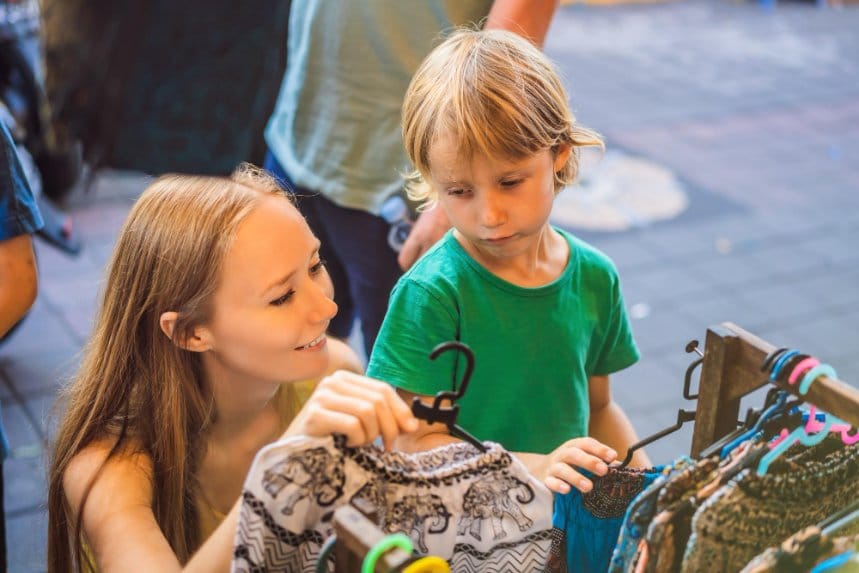
One of the biggest challenges in toddler clothing is that each brand has its own interpretation of what constitutes a specific size. Here's how major brands compare:
Popular Brand Sizing Comparison (3T Example)
| Brand | Height Range | Weight Range | Fit Notes | Runs Large/Small |
|---|---|---|---|---|
| Carter's | 35-38 inches | 28-32 lbs | True to size | Standard |
| Gymboree | 33-36 inches | 30-32 lbs | Roomy fit | Runs large |
| OshKosh | 35-36 inches | 29-31 lbs | Durable, structured | Runs small |
| Gap Kids | 35-38 inches | 28-33 lbs | Slim cut | Runs small |
| Target (Cat & Jack) | 36-39 inches | 28-32 lbs | Value-focused fit | Runs large |
| H&M Kids | 34-37 inches | 27-30 lbs | European cut | Runs small |
| Zara Kids | 35-38 inches | 26-29 lbs | Fashion-forward fit | Runs very small |
Shopping Strategy by Brand
Brand-Specific Tips
- For consistent sizing: Stick with Carter's or Target brands
- For growing room: Choose Gymboree or Cat & Jack
- For slim toddlers: Try Gap Kids or H&M
- For sturdy play clothes: OshKosh runs small but lasts longer
Use our toddler size comparison tool to see how different brands compare for your child's measurements.
International Sizing Differences
If you're shopping for baby clothes from international brands, sizing can be even more confusing:
| US Size | UK Size | EU Size | Measurement Basis |
|---|---|---|---|
| 2T | 18-24 months | 92 cm | Height-based |
| 3T | 2-3 years | 98 cm | Height-based |
| 4T | 3-4 years | 104 cm | Height-based |
How to Measure Your Toddler Correctly
Essential Measurements for Perfect Fit
Taking accurate measurements is crucial for online shopping and ensuring the best fit. Here's how to measure your toddler properly:
What You'll Need:
- Soft measuring tape
- Notepad to record measurements
- Your toddler in light clothing or underwear
- Another person to help (optional but helpful)
Step-by-Step Measuring Guide:
- Height: Have your child stand against a wall without shoes. Mark the top of their head and measure from floor to mark.
- Chest: Measure around the fullest part of the chest, usually just under the armpits. Keep tape level.
- Waist: Measure around the natural waistline, about 1 inch above the belly button.
- Hips: Measure around the fullest part of the hips and bottom.
- Inseam: For pants, measure from the inner thigh down to where you want the pants to end.
When Measurements Don't Match Size Charts
It's common for toddlers to fall between sizes or have measurements that span multiple size categories. Here's what to do:
- Height and weight in different sizes: Go with the larger size for comfort
- Between two sizes: Consider the season and layering needs
- Rapid growth phase: Size up to get more wear time
- Proportionally different: Look for adjustable features like elastic waists
For personalized recommendations when your child falls between sizes, use our interactive toddler size chart to find the best fit.
Smart Shopping Strategies for Toddler Clothes

Online vs In-Store Shopping
Online Shopping Advantages
- Better selection and prices
- Easy size comparison across brands
- Customer reviews for fit guidance
- No tantrums in fitting rooms
Best for: Basics, replenishing known sizes, sale shopping
In-Store Shopping Advantages
- Try before you buy
- Feel fabric quality
- Immediate gratification
- No shipping costs or delays
Best for: New brands, special occasions, when between sizes
Seasonal Shopping Strategies
Fall/Winter Shopping
- Buy winter coats one size up for layering
- Consider footed pajamas in current size (they stretch)
- Stock up on basics in next size up for growth spurts
Spring/Summer Shopping
- Buy swimwear in current size (less critical for perfect fit)
- Consider UV protection features in summer clothes
- Look for play clothes that can get messy
Budget-Friendly Shopping Tips
Money-Saving Strategies
- Buy end-of-season sales in the next size up
- Focus on quality basics that mix and match
- Check consignment shops for barely-worn items
- Join brand email lists for sale notifications
- Consider clothing swaps with other parents
Building a Functional Toddler Wardrobe
Focus on these essential pieces that work for both boys and girls:
| Item Type | Quantity Needed | Sizing Tip | Best Features |
|---|---|---|---|
| Basic T-shirts | 6-8 pieces | Buy in current size | Machine washable, comfortable cotton fabric |
| Play pants | 4-5 pairs | Consider elastic waists | Reinforced knees, easy care |
| Pajamas | 4-5 sets | Size up for comfort | Flame-resistant, snug fit |
| Underwear | 7-10 pieces | Current size | Soft seams, easy pull-on |
| Outerwear | 2-3 pieces | Size up for layering | Easy zippers, washable |
Common Sizing Problems and Solutions
Problem: Clothes That Fit Weird
Too Long in Body, Right Everywhere Else
Solution: This is common in tall, slim toddlers. Look for brands that offer "slim" cuts or consider hemming longer items.
Right Length, Too Wide
Solution: Try girls' cuts even for boys, or look for adjustable waistbands and side ties.
Pants That Don't Stay Up
Solution: Invest in good adjustable belts or look for pants with internal adjusters. Some brands offer stretchy fabrics that conform better.
Problem: Rapid Growth Spurts
Toddlers can grow unpredictably. Here's how to handle sudden size changes:
- Keep a few larger sizes on hand for basics like underwear and pajamas
- Buy extender sets for pants that become too short
- Look for adjustable features like roll-up sleeves and cuffs
- Consider layering pieces that can work in multiple seasons
Problem: Clothing That Wears Out Too Fast
Durability Solutions
- Choose reinforced knees for active toddlers
- Look for quality seam construction
- Pre-treat stains immediately
- Rotate clothes to prevent overwear
- Follow care instructions carefully
Growth Spurts and Development Factors

Understanding Toddler Growth Patterns
According to pediatric growth experts, toddlers experience growth in spurts rather than steady increases. Understanding these patterns helps with clothing purchases:
Typical Growth Spurts
- 18-24 months: Major transition period, rapid height gain
- 2.5-3 years: Body proportions change, become less "baby-like"
- 4-5 years: Pre-school growth spurt, increased activity needs
Are Toddler Girls Bigger Than Boys?
This is a common question with a nuanced answer. Research from the CDC Growth Charts shows:
- At birth: Boys are typically slightly larger on average
- 12-24 months: Very minimal differences between genders
- 2-5 years: Boys may be slightly taller, but weight differences are minimal
- Individual variation: Much greater than gender differences
When Do Boys and Girls Start Growing Differently?
Significant gender-based growth differences don't typically emerge until later childhood:
- Ages 2-5: Minimal differences in size and proportion
- Ages 6-8: Some differences begin to emerge
- Ages 9+: More significant differences in body shape and growth patterns
Factors Affecting Individual Growth
- Genetics: Family height and build patterns
- Nutrition: Adequate protein and calories for growth
- Activity level: Active toddlers may have different proportions
- Sleep patterns: Growth hormone is released during sleep
- Health conditions: Any medical issues affecting growth
Frequently Asked Questions
Conclusion
While toddler boy and girl clothes use the same size labels, the reality is that they fit quite differently. Understanding these differences can save you time, money, and frustration when shopping for your little one.
Essential Shopping Rules
- Always measure your child before shopping
- Read brand-specific size charts
- Consider the child's activity level and preferences
- Buy basics in the next size up during sales
Fit Considerations
- Boys' clothes: expect boxier, looser fits
- Girls' clothes: anticipate more fitted cuts
- Cross-shop sections for the best fit
- Look for adjustable features
Money-Saving Tips
- Stick with trusted brands for consistent sizing
- Shop end-of-season sales in larger sizes
- Invest in quality basics that last
- Consider consignment for special occasion wear
Growth Planning
- Expect growth spurts at 18-24 months and 2.5-3 years
- Keep a few larger sizes on hand for basics
- Re-measure every 3-4 months
- Focus on comfort over perfect fit
Final Recommendations
The most important thing to remember is that every child grows differently. While these guidelines provide a solid foundation, your child's individual measurements, preferences, and growth patterns should always take precedence over general sizing rules.
Don't be afraid to mix and match from boys' and girls' sections to find the best fit for your toddler. Comfort, safety, and durability should always be your top priorities when selecting clothes for active, growing toddlers.
For ongoing sizing support, bookmark our helpful tools: use the interactive toddler size chart for quick size lookups, the toddler size comparison tool to compare brands, and the toddler size transition tracker to plan future purchases.
For more helpful guides on toddler clothing essentials and choosing durable clothes for toddlers, explore our comprehensive clothing resources.

